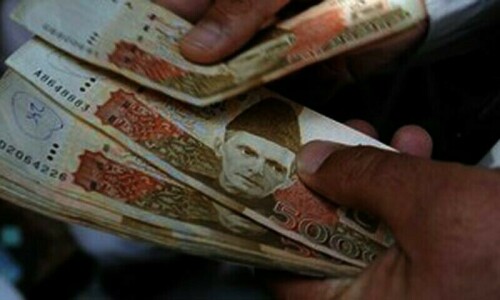Finance: Economic issues far from over

Due to political instability, election uncertainty, and the growth-choking nature of the International Monetary Fund’s short-term financial support, it may be another year of low growth and high inflation.
This means people without jobs – and there are eight million permanently jobless people – may not get jobs during this fiscal year.
Pakistani workers typically support five members of their families. The result is that at least 40 million Pakistanis will struggle to survive, and many of them will rely on state welfare programmes and non-governmental organizations just to eat two square meals a day.
Pakistan’s revenue resources are consumed mostly by external and internal debt servicing, defense, and salary and pension expenditures. As a result, it is impossible to feed at least 40 million people through state welfare programs.
In light of last year’s meager 0.3 percent economic growth, large charities, including Edhi Foundation, JDC Foundation, and Saylani Welfare Trust, have already raised concerns about dwindling financial donations.
In recent years, large charities, such as Edhi Foundation, JDC Foundation, and Saylani Welfare Trust, have raised alarms over dwindling donations to feed the poor.
Growth is expected to reach 3.5 percent this year, according to the government. Despite the IMF’s short-term loan requirements and years of economic mismanagement, that may remain elusive in a generally growth-stifling environment.
Immediately following the Board’s approval of the programme on July 12, the IMF will begin disbursing the three-instalment, $9-month Standby Arrangement (SBA). There will, however, be serious consequences for economic growth, inflation, and job creation if $1bn per quarter is not used to ease the ongoing forex crisis.
As a condition of IMF assistance, Pakistan must eliminate all subsidies, increase energy prices further, reduce circular debt in the energy sector, improve tax collection, lift all import restrictions, and make foreign exchange rates completely demand-driven.
Central bank officials have already asked banks to begin entertaining all import letters of credit (LC) instead of prioritizing them based on foreign exchange availability. It has also assured the IMF that it will not interfere with exchange rates.
It is unlikely that the central bank will be able to keep the exchange rate in an artificial range, even temporarily, as these two factors will push demand for foreign exchange and weaken the rupee.
Consequently, following the signing of the staff-level agreement for the SBA on June 29, the rupee has already begun to fall against the US dollar.
During July-September and October-December 2024, the local currency is likely to be under some pressure. As a result of the lifting of import restrictions, imports will take some time to ramp up, reducing pressure on the exchange rate.
Further, the narrowing of the gap between the interbank and open market exchange rates after the signing of the SBA will initially boost remittance inflows.
The gap between the two rates may widen again during October-December after the general elections due in October-November or if the constitutional tenure of the caretaker setup is extended due to political unrest.
Consequently, a portion of the remittances will again be channeled through illegal hundi/havala channels, affecting forex supply in banks.
A weaker rupee will make imports more expensive, and imported inflation will increase inflationary pressures. From 12.15pc a year ago, the national average consumer inflation rose to 29.2pc in July-June 2022-23. Nevertheless, Wholesale Price Index inflation, which affects consumer inflation with a time lag, was a whopping 32.8pc in the last fiscal year.
Inflation pass-through is due during this fiscal year. The consumer price index fell to 29.4 percent in June from 38 percent in May. As long as the exchange rate remains relatively stable, the SBP’s policy rate increase (from 21 to 22 percent) may help ease inflation, but only for a limited time.
As soon as and to what extent energy prices, subsidies, new taxes, and expensive bank borrowing start choking production and supplies, the pace of consumer inflation will also be determined, as each of these factors will lead to higher cost-push inflation.
In contrast, how soon and to what extent joblessness and business closures and falling net disposable income of households and companies start stifling aggregate demand may have an effect on inflation.
July-April 2022-23 saw a 9.4pc decline in large-scale manufacturing production, and April alone saw a 21.07pc decline. We should not expect a strong rebound in large-scale manufacturing (LSM) during the current fiscal year because energy prices are rising day by day, subsidies are being removed, and political uncertainty is at its highest.
Small increases, on a shallow base, may have little effect on economic growth and even less on job creation. This will, in turn, have a negative impact on exports and domestic trade as LSM activities expand slowly.
This will negatively impact the export sector’s performance, already affected by the withdrawal of subsidies and higher energy and financial costs.
As a result of a virtual halt in the opening of import LCs during much of the outgoing fiscal year, Pakistan’s goods imports consumed $55.3bn. The import bill, however, was twice the $27.7 billion export income for goods.
A trade deficit of $27.5 billion was recorded. Following the lifting of import restrictions, the IMF projects a trade deficit of at least $34 billion this year.
Pakistan will not be able to finance such a large trade deficit with remittances – remittances declined 12.8 percent year-on-year to $24.8 billion in the eleven months of last year.
